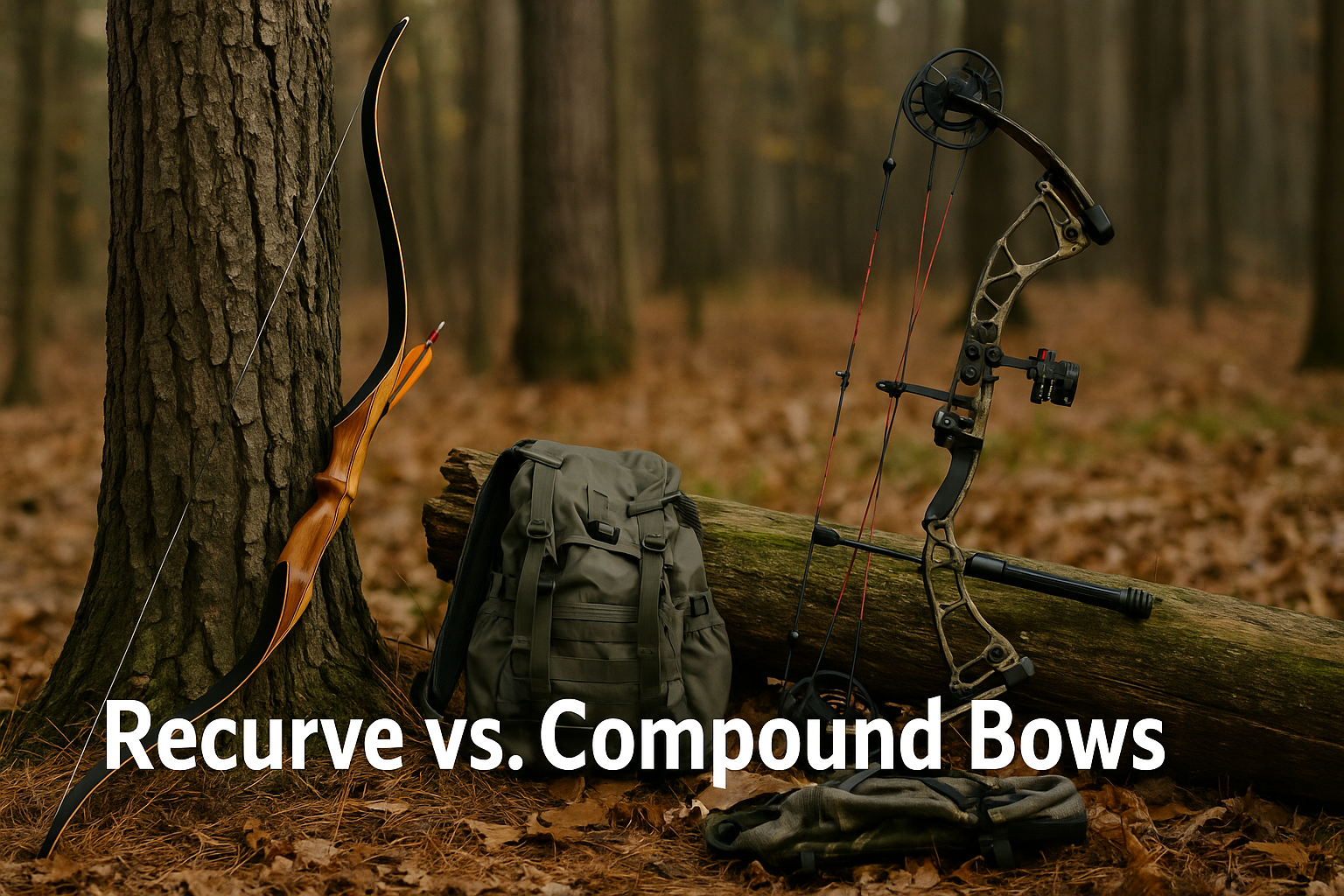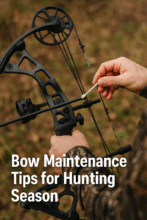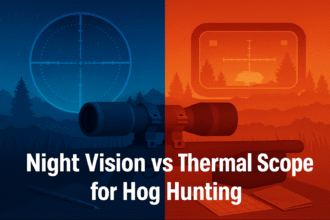Recurve vs. Compound Bows: Which Is Better for Hunting?

Bowhunting has always carried a sense of tradition, skill, and closeness to nature that firearms simply cannot replicate. Yet within the world of archery, hunters often face one critical choice before stepping into the woods: Should I hunt with a recurve vs. compound bows?
This debate has existed since the modern compound bow revolutionized archery in the 1960s. On one side, you have traditionalists who swear by the simplicity and instinct-driven shooting of recurves. On the other, you have hunters who value the speed, precision, and mechanical efficiency of compound bows.
So, which is truly better for hunting? The short answer: it depends on your hunting goals, terrain, and skill level. But the long answer requires a deep dive into the features, pros and cons, and real hunting performance of each bow type. That’s exactly what this article will cover in detail.
Table of Contents
- What Is a Recurve Bow?
- What Is a Compound Bow?
- Recurve vs. Compound Bows: Side-by-Side Comparison
- Hunting with a Recurve Bow
- Hunting with a Compound Bow
- Cost Breakdown
- Ethical Considerations in Bowhunting
- Real Hunting Scenarios
- Which Is Better for Beginners?
- Tips for Choosing Your Bow
- Conclusion: Recurve vs. Compound Bows for Hunting
What Is a Recurve Bow?
The recurve bow is one of the oldest bow designs, tracing its roots back thousands of years. Cultures from the Mongols to Native Americans relied on recurve-style bows for both hunting and warfare. Its defining characteristic is the way the limbs curve away from the archer at the tips, creating more energy storage compared to a straight-limbed longbow.
Characteristics of a Recurve Bow
- Design Simplicity: No pulleys, cams, or cables. Just a riser and two curved limbs.
- Lightweight: Easy to carry for miles in rough hunting terrain.
- Instinctive Shooting: Relies heavily on the archer’s natural aim rather than sights.
- Shorter Range: Effective hunting range typically 15–30 yards for most hunters.
Why Some Hunters Love Recurves
Hunters often choose recurves because of the raw hunting challenge. You have to get close—really close—to your prey, making every successful shot more rewarding. Many hunters describe it as “hunting the way our ancestors did,” providing a primal connection to the land and the game pursued.
What Is a Compound Bow?
The compound bow is a modern innovation created to solve two major hunting challenges: holding heavy draw weights for long periods and improving arrow speed. By using cams, pulleys, and cables, compound bows allow hunters to pull a heavy draw weight but hold only a fraction of that weight at full draw. This is called let-off.
Characteristics of a Compound Bow
- High Power: Generates tremendous arrow speed and penetration.
- Let-Off Advantage: A 70 lb draw weight might feel like only 15–20 lbs at full draw.
- Accuracy Tools: Designed to work with sights, stabilizers, and arrow rests.
- Long Range: Capable of ethical shots beyond 40 yards in the hands of skilled hunters.
Why Hunters Prefer Compounds
Compound bows are the go-to choice for modern bowhunters, especially for big game. They are more forgiving, accurate, and effective at longer ranges. For hunters in areas with wary game (like elk in open fields), a compound bow provides a clear edge.
Recurve vs. Compound Bows: Side-by-Side Comparison
Let’s break down how these bows perform in five major hunting categories.
1. Power and Arrow Speed
- Recurve Bow: Energy transfer depends entirely on your draw length and draw weight. A 50 lb recurve can kill deer effectively, but arrow speeds are usually in the 160–190 fps range.
- Compound Bow: Mechanical advantage boosts arrow speed into the 280–350 fps range. This results in flatter trajectories and better penetration on tough hides or bones.
Winner: Compound Bow
2. Accuracy
- Recurve Bow: Accuracy relies 100% on consistent form and instinctive aiming. Even skilled hunters often keep shots within 25 yards.
- Compound Bow: Equipped with sights, peep sights, and stabilizers, compound bows allow precision at 40+ yards with confidence.
Winner: Compound Bow
3. Portability and Simplicity
- Recurve Bow: Weighs far less than compounds (2–3 lbs vs 4–6 lbs). Easy to pack on long treks. No mechanical parts to fail.
- Compound Bow: Heavier, bulkier, and requires tuning. Dropping or damaging a cam can ruin a hunt.
Winner: Recurve Bow
4. Learning Curve
- Recurve Bow: Requires months or years of consistent practice to master. Hunters must develop instinctive aiming skills.
- Compound Bow: Beginners can shoot accurately much faster. Accessories and let-off reduce the difficulty curve.
Winner: Compound Bow
5. Hunting Versatility
- Recurve Bow: Perfect for close-range hunting in dense forests or when still-hunting. Limited for open plains or long shots.
- Compound Bow: Versatile for whitetails, elk, moose, antelope, and more. Works in almost any hunting environment.
Winner: Compound Bow
Hunting with a Recurve Bow
When hunting with a recurve, success comes down to stealth and shot placement. You’ll need to stalk closer than most compound hunters.
Pros of Hunting with a Recurve
- Traditional Experience: Feels more connected to the hunt.
- Quiet and Lightweight: Easier to maneuver in thick woods.
- Durability: Fewer parts mean less risk of mechanical failure.
Cons of Hunting with a Recurve
- Limited effective range (20–30 yards).
- Requires constant practice to stay sharp.
- Not as effective for large or tough game without perfect shot placement.
Best Use: Whitetail deer in wooded areas, turkey hunting, or hunters seeking the traditional challenge.
Hunting with a Compound Bow
A compound bow offers a technological edge that translates to more opportunities in the field.
Pros of Hunting with a Compound
- Extended Range: Ethical shots out to 40–60 yards.
- Penetration Power: Ideal for elk, moose, and bear.
- Accuracy: Easier to master and more forgiving of mistakes.
Cons of Hunting with a Compound
- Heavier and less portable.
- Higher cost due to accessories.
- Maintenance required (cables, cams, tuning).
Best Use: Versatile for almost any game, from deer to moose, across diverse terrains.
Cost Breakdown
- Recurve Bows: $150–$500 (bow), minimal accessories. Total setup under $600.
- Compound Bows: $400–$1,200 (bow), plus $300–$500 in accessories. Total setup often exceeds $1,000.
If budget matters, recurves win. But if performance is your top priority, compounds justify their price.
Ethical Considerations in Bowhunting
Hunting ethically means minimizing suffering and ensuring a quick, clean kill.
- With recurves, you need to stalk closer and wait for perfect shot placement.
- With compounds, greater speed and penetration reduce the chance of wounding game.
Real Hunting Scenarios
- Deer in Dense Woods
- Recurve hunters thrive here with 15–25 yard shots.
- Compound hunters still succeed but may find the heavier bow cumbersome in tight cover.
- Elk in the Rockies
- Recurve hunters face challenges getting within 20 yards of wary elk.
- Compound hunters benefit from 40-yard accuracy, making it the more practical choice.
- Backcountry Hunts
- Recurve bows are lightweight for long hikes.
- Compounds deliver long-range versatility but add weight to your pack.
Which Is Better for Beginners?
For new hunters, a compound bow provides faster success, higher confidence, and ethical shooting advantages.
However, if you want to truly develop archery skill, patience, and instinctive aiming, a recurve bow offers a rewarding journey.
Tips for Choosing Your Bow
- Match the Bow to Your Game
- Small to medium game: Either works.
- Large game: Compound recommended.
- Consider Your Hunting Style
- Traditional challenge: Recurve.
- Versatility and efficiency: Compound.
- Think About Terrain
- Thick woods: Recurve excels.
- Open plains/mountains: Compound shines.
Conclusion: Recurve vs. Compound Bows for Hunting
When comparing recurve vs. compound bows for hunting, the truth is that neither bow is universally better; the choice depends entirely on your goals and style as a hunter. Recurve bows offer a traditional, instinctive experience that connects you more deeply with the heritage of archery. They demand patience, practice, and the willingness to get close to your prey, rewarding hunters with a raw, primal satisfaction that modern equipment cannot replicate. Compound bows, on the other hand, provide power, speed, and precision that make them highly effective for larger game and longer shots. With their mechanical advantage and accuracy, they give hunters an edge in nearly any environment, especially when success is the top priority. In the end, both bows are capable of ethical and successful hunting when mastered. What matters most is choosing the bow that resonates with your personal hunting philosophy, dedicating yourself to practice, and embracing the experience of the hunt itself.







